-
Posts
307 -
Joined
-
Last visited
Content Type
Profiles
Forums
Articles
Gallery
Downloads
Events
Posts posted by Wroughton
-
-
1 hour ago, ThomasPowers said:
Water quenching steel means they get hard when you quench them from critical in water. This makes them brittle and so unsuited for tongs. What you want is a steel that is not water quenching. and so basically unhardening as water quench is towards the harshest quench end of the spectrum.
Wrougtiron; don't forget CP 1 or 2 Titanium for tongs! I forged a set for my gasser as they don't transmit heat very well and can be quenched.
Better idea is to learn to work so the tongs never get to critical and so no problem in quenching them! Or if you must; have two or more sets and let them cool in air between uses.
I definitely wanted to mention Titanium but I was trying to keep it to a 4 lane hwy instead of a cloverleaf. I didn't forget CP 1 either. Mostly because I didn't know there was such an animal. Now, the friday research detour is underway.
Hah, should have taken an open book test. It's commercially pure Ti.
-
It's complicated. But no. I don't think you need "spring steel" for tongs. And there are alloys that will not harden when they quench. However, you will probably feel woozy after looking at what prices you'll pay for such stock. Hadfield manganese is a work hardening alloy that would fit the bill. A little tough to forge but fairly forgiving. 304 stainless might be a better test.
-
I'm having picture withdrawal. Can you show us that lil guy again?
-
7 minutes ago, ThomasPowers said:
The higher the grade the wrought iron the more difficult it is to tell by rust striations; very high grade wrought iron can have over 250000 slag spicules per each cross sectional inch---a bit fine for eyeballing! (number from "Wrought Iron Its Manufacture, Characteristics and Applications" James Aston and Edward Story)
And that's when it hits the acid bath and a little magnification. However, I didn't need it for the original picture.
I do have some bridge material that I have to test that I've wondered about for a while. You've inspired me to take a look.
-
Wow! Saucy smiths are we! I can indeed spot the "grain". No Xray eyes needed. After a short amount (a ton or two), you learn to spot the difference between a directional blemish that may suggest wrought fibres and the real thing. Not all wrought is exposed by a spark test. Acid etch end "grain" and sides.
-
It's wrought. I believe I can see the grain.
-
Barry,
I don't have the parts list to compare to. For bending flat stock the hard way? Or for the angle iron dies?
I'll see if I can find them. I have all my extra parts carefully filed away in the "bucket".
-
On May 12, 2017 at 10:36 AM, jlpservicesinc said:
I was labeled a troubled youth.. "WHY"???
Yup, you were growing up, but not shutting up. Ideas and questions make our simple brothers and sisters nervous and generally uneasy.
Keep wondering. "Wonderlust"?
-
We, who have forged with so little, for so long,
can forge anything from
absolutely nothing at all.
My take.
Mother Teresa gets credit for the original usually, but it was a fellow named Konstantin Josef Jirecek that penned it first.
“We, the unwilling, led by the unknowing, are doing the impossible for the ungrateful. We have done so much, for so long, with so little, we are now qualified to do anything with nothing.”
-
9 hours ago, arftist said:
Fiberglass is not quite sufficient. Instead it should be deeply buried in ash.
Well......ok. I guess I have more insulation sitting around than ash. I have rolled things up well enough that they were still quite warm the next day. Think a couple layers of insulation and duct tape. More insulation equals higher R rating so I'd argue you can keep your ash. For small items I wrap and then brick up in the appropriate sized gas forge for more insulation. Furthermore, I'd need a dumpster of ash to take care of the last vise I fixed.
To weld the vise I TIG welded with nickel stick rod for cast iron after I took the flux off. Bronze would probably be that much more forgiving and less prone to cracking. I'll try it on the next cast fix.
-
-
I went to see a collection of XL blacksmith tools this weekend.
Here's a few pictures. Anyone seen a swage like this before? I was wondering if it was for making huge J bolts.
There's an extra large swage block and pattern also. I was so addled by all the piles I didn't get a picture of the actual swage, just the pattern.
-
2 hours ago, jlpservicesinc said:
Wow, and I thought I used to be a collector of old iron.. I mean Old Wrought iron..
 Sweeeeeettttt Pile of goods you got there.. Good thing your not closer or else I'd be every other day making off with stuff..
Sweeeeeettttt Pile of goods you got there.. Good thing your not closer or else I'd be every other day making off with stuff.. 
I'm a Smaug. Dress accordingly lest ye be flambéed.
-
On 4/15/2017 at 11:39 AM, jlpservicesinc said:
now that was a great find..How neat is that..
 Pretty amazing to think they saw the change coming and instead of fighting it they made coach bodies for cars..
Pretty amazing to think they saw the change coming and instead of fighting it they made coach bodies for cars..
My grand parents had a Studebaker when I was young.. What a tank.. I remember going out in a snow storm with it..
No I have not verified they are steel.. Just going from previous experience with this size axle.. If at some point I decide to use them for tools I will go through the process of determining material.. From the rust pattern it shows it to be carbon steels but then again I did not verify..
that really is one very awesome axle to find.. .. did /was this carriage in a fire? Looks like charcoal wood behind it.. Or the Japanese black finally let go..
Studebaker axle first, then some random goodies with small rail cart axle in WI
-
11 hours ago, rockstar.esq said:
Wroughton:
I've encountered plenty of passionate and ambitious people who would do anything to get ahead. I think what you're describing is someone who wants to achieve their goals on the basis of their own work. They value their work, so they tend to value the time, skill, and efforts of others. In my experience, these folks are quick to set the terms of understanding for any request. I've had such people offer to pay/trade me for the time to figure out what it would cost to do the job.
Rockstar,
I agree. I left that a tad generalized. I mean gnawing on the material passionate. Not just the ambitious bouncing around because they're happy to be breathing air and they want you to come and drink some koolaid with them. The true passionate ones attempt to consume every facet of their current focus, in whatever form, rather than immediately becoming, say, a timber framer without ever picking up a chisel. There are more than a few here on IFI that are full speed and I chuckle when I can feel their WANT to learn through their post. I feel I'm much better at spotting the difference now as there was a time when I often mistook fake exuberance for passion. Good work shows a lot more than flapping gums.
-
You don't need to be a masochist to be a blacksmith. But it sure helps.
-
If that thing only had an hour meter onboard. They kept using it long after it started falling apart.
-
(1)112 - (2)56 -(6) 6 = 174 lbs if my hundredweight brain scale is right. A hundredweight is 112lbs, a quarter weight is 28lb
Its ready to go and in great shape. Just add hot metal and hammer.
It's priceless to you. Now go find the scrap pile.
-
4 hours ago, littleblacksmith said:
A trip to the scrap yard. 29 inches of fork lift tine=2 striking anvils. Also a small axle, 3 pieces of leaf spring, a plow point that I thought was kinda cool, a large array of cast iron, and an old Klein wire puller. Along with that I found a old hand forged hinge. you can see the holes were punched by the swelling, but the actual hinge part is hard to tell if it was forged. Also the middle holes parallel with the bar have a groove that runs about 1 inch on either side of the hole. Thoughts? and the tow pieces to the left of the long bar stock is Wrought iron. Speaking of the bar stock, I picked up 20 feet of 1/2" round, 20 feet of 1/4" round, and 20ft of 1/4"x 1 1/2" flat bar that I will be forging into strap hinges for my shop doors today.
Littleblacksmith
The Force is strong with this one. Start making boxes out of pallets and scrap wood.
-
It came out of the river with the other stuff. Out of sight, out of mind. It was bulldozed, pushed into the log pond behind the dam. For this stuff my shop helped the county clean up all kinds of trash from the river and they rewarded us with the iron pile while they took care of the concrete and asphalt chunks. The county had a tilt bed truck used for removing abandoned vehicles to winch garbage.
I spun the hub off and the spindle was still shiny with grease intact. I think we used the springs for bench hardware.
-
You've muddied a couple of lines for me. Mainly between how we treat family, friends and coworkers.
If you're a chronic "fixer" or "helper" you can't optimize your effectiveness if you're so stretched out in area that you can't help someone when it's really needed.
Guarding your ability to think and help is being compassionate towards yourself.
Stating your business is a good idea but most people don't like hearing it. You've just taken out any sideways play they may have had in either misunderstanding your reasons or avoiding giving any credit due. When "freebies" are given on a job I now call them out on the invoice after a battle with a contractor that got way too much and gave too little. When I'm asked to overlook an hour of work or parts supplied I have the "freebie" count on record.
On that note, I employ a tool I've used my whole life. I put my neck out early. It may hurt if you take advantage of it but I'll know your inner workings......FAST. To users and takers it looks like easy money/gain and they reveal themselves. That's another reason I like working with people with a passion for their work, they usually don't have any other motive than wanting to perform and learn and sometimes, even grow.
I think there's more than one TED talk on this subject.
-
4 hours ago, jlpservicesinc said:
The axles were made from medium or high carbon and are excellent for tools.. the springs same deal., but hate to really do anything with the old pieces..
Have you verified that the axles are steel? I have several axles that are WI. One Studebaker wagon axle is particular is very coarse WI. I'll locate the axle at the shop today and get a picture.
-
pigpen,
I chase the grain with an appropriate wire wheel for the wood hardness (soft woods do best with a fine wheel and hardwoods I get after with a knotted wheel) or burn with a weed burner or both. Grinding wheels and flap discs work well for hogging off material and shaping with the grain. Toast with weed burner until you get some charring and then knock that back with steel wool then finish with your favorite oil.
Look up steel wool and vinegar for staining/aging wood also.
-
1 minute ago, brickman said:
Lol, took the picture after i had cleaned up and showered and such, was in my lounging clothes.
HAHA! Sorry, couldn't help it. At least you weren't so excited you forgot to put clothes on.


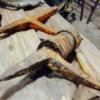
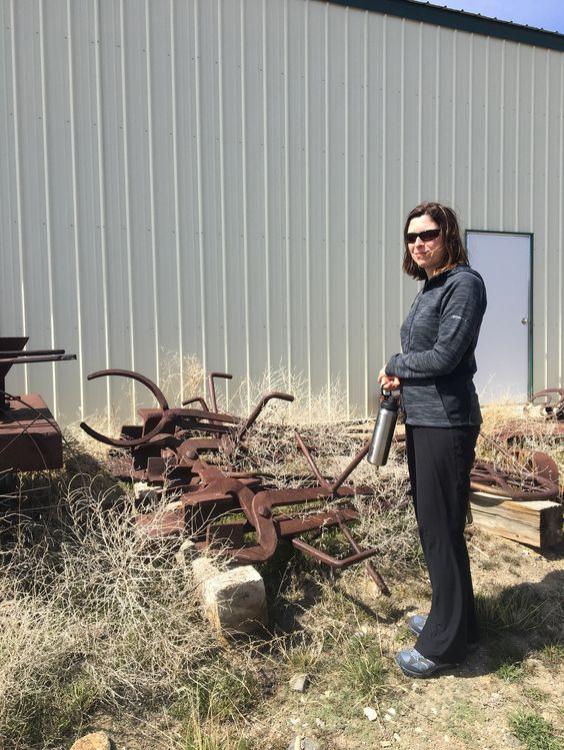
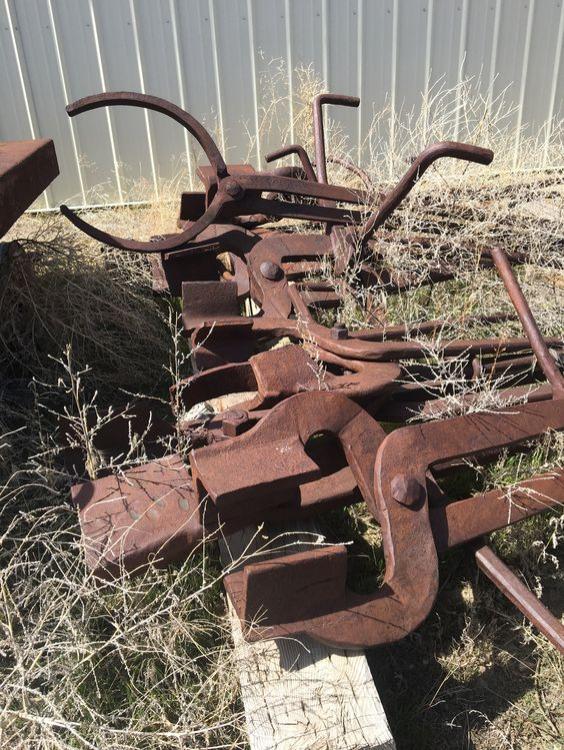
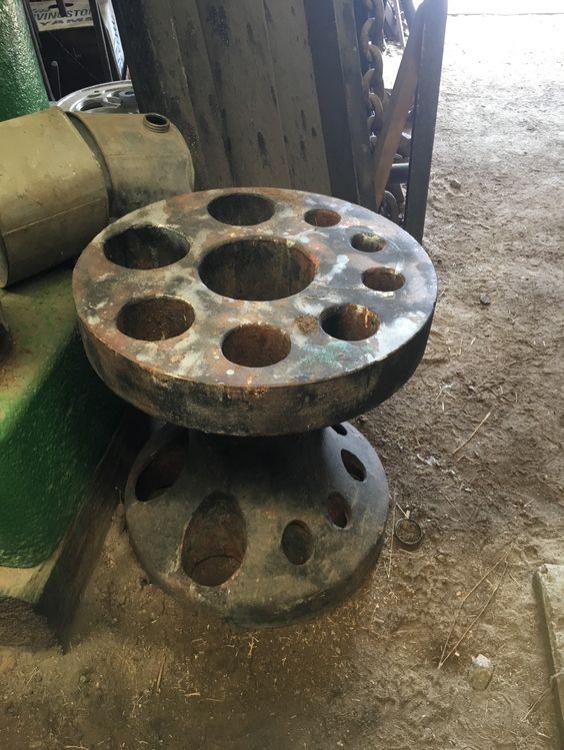
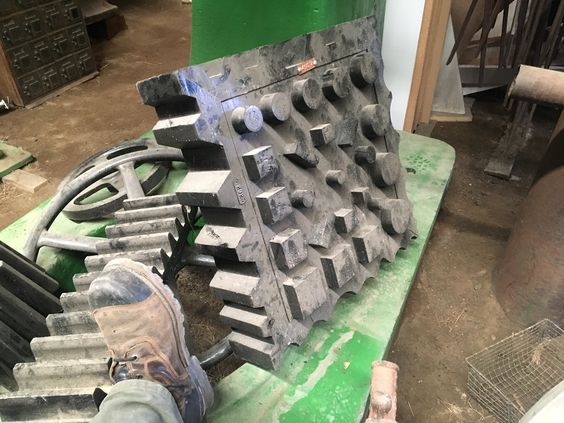
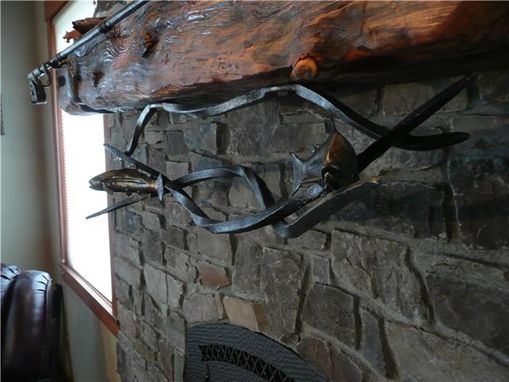
Forging Tubing
in Blacksmithing, General Discussion
Posted
heavier wall is friendlier when the goal is to forge a taper. Not so when collapsing the wall when twisting. I like me some tubing. You can also, of course, make square from pipe if you so desire.